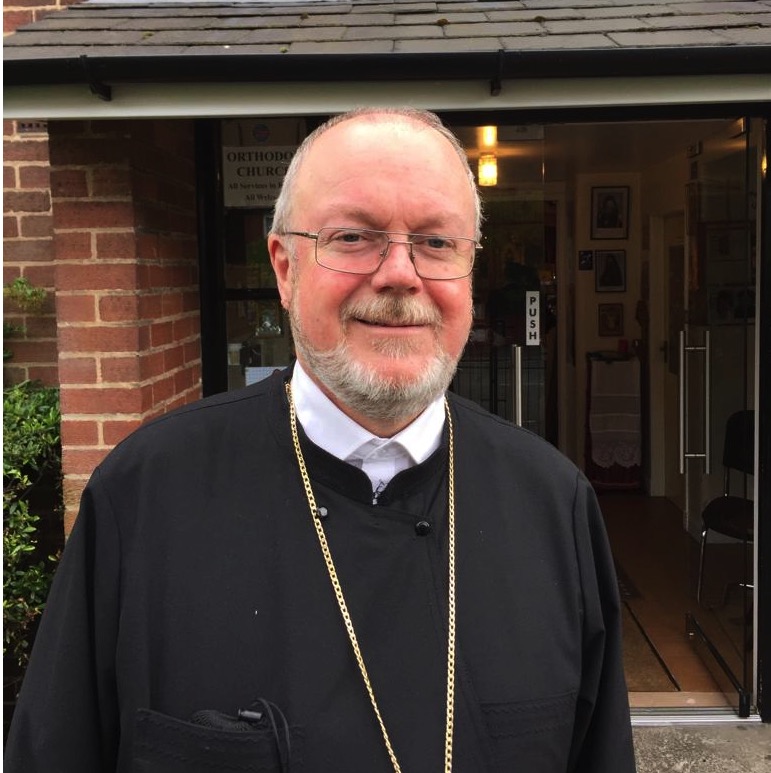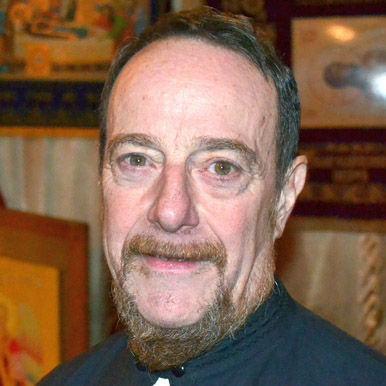Two Pillars on One Foundation
In the name of the Father and of the Son and of the Holy Spirit. God is one. Amen
We celebrate today two of the great saints of the Church—Peter and Paul. Both were Jews who were called by Jesus Christ to lead the new Christian Church; and both accepted their callings. Their lives were changed so dramatically that their names also changed. The fisherman Simon became the rock of faith Peter. The scholar and persecutor of Christians Saul became the evangelist and preacher Paul. That’s how we know them today—Peter and Paul, two outstanding leaders of the early Church. We rightly admire and respect them for their prayers and leadership, their insights and achievements, their bold travels and beautiful writings gathered in the New Testament. Yet they were also, like each of us, sinners who reached out to God and continually asked for His help and guidance. Let’s seek to know them better and then see how their lives can be an inspiration to us today.
Before meeting Jesus Christ, Simon was a hard-working fisherman in Capernaum, a seaside village in Galilee in northern Palestine. He was part of a family that included his brother Andrew and his mother-in-law, as we know from the Gospel of St Matthew, chapter 8, verse 14 and from the Gospel of St Luke, chapter 4, verse 38. However, we know very little about his actual family situation at the time Jesus Christ said to Simon and Andrew, “Follow me” and both agreed.
When Simon became the first person to identify Jesus as “the Christ” as set out in the Gospel of St Matthew, chapter 16, verse 16, Jesus Christ renamed him Peter, meaning “rock,” referring to the strength of Peter’s faith. Later, with the arrest of Jesus Christ, the Gospels of Matthew, Mark, Luke and John all confirm that Peter did deny Christ three times in the garden of the High Priest of the Jewish Council. However, Peter wept and sought forgiveness; and, as explained in the Gospel of St Luke, chapter 24, verse 12, Peter ran to the empty tomb. In First Corinthians, chapter 15, verse 5, Paul confirms that Christ appeared to Peter after the Crucifixion.
Saul’s own journey to Christ began on the road to Damascus, as explained in the book of Acts, chapter 9, when he was blinded in a vision in which Christ asked, “Saul, Saul, why are you persecuting me?” Then, when Saul demonstrated his faith in Christ, his sight returned; he was filled with the Holy Spirit; and he began to draw many Jews to Christ. We tend to think of Paul today as an apostle primarily to the Gentiles—the non-Jews. However, Paul’s calling, as explained in Acts, chapter 9, verse 15, was to carry the name of Christ “before Gentiles and Kings and the people of Israel.”
Peter learned, like Paul, that Christ sought to reach everyone, whatever their previous beliefs or life experience. As Acts 10 explains, Peter was called to the home of the Roman centurion Cornelius, where “the Holy Spirit fell on all those who heard [Peter’s] message.” Then Cornelius and all his household were “baptised in the name of Jesus Christ.” Although both Peter and Paul sought to draw everyone to Christ, it would be fair to say that Peter was more active with the Jews, and Paul, especially in his travels, reached out more to the Gentiles. Yet at the First Council in Jerusalem in 48 AD both Peter and Paul insisted that Gentiles should be welcomed into the Church, and that it was not necessary to observe Jewish practices of initiation into the Church nor all Jewish dietary laws. That council, led by the apostle James, agreed, confirming what Peter had told Cornelius; and I quote: “I now truly understand that God does not show favouritism in dealing with people, but in every nation the person who fears him and does what is right is welcomed before him.”
James and Peter would certainly have agreed with Paul’s words in Second Corinthians, chapter 4, verse 16, that, and I quote, “even if our physical body is wearing away, our inner person is being renewed day by day.” The question that confronts us today is the same question that confronted Peter and Paul and the early Church: “How can the inner person be renewed in Christ?” Our own renewal begins with belief in Jesus Christ as fully human and fully divine. In the first century, old ideas about pagan gods, as well as the distinctions between Jews and Gentiles, had to be left behind. Today, we too need to leave behind the idea that our own nation and culture with its secular and economic goals should be inflicted on others.
We are each asked the question that Jesus Christ asked the apostles at Caesarea Philippi, “Who do you say that I am?” Simon Peter recognised that Jesus was the Christ—the one who had been appointed and anointed by God the Father to save humanity. Theodore of Mopsuestia, prominent in the Antiochene school of Biblical interpretation, has written, and I quote: “[Peter’s confession] is not the property of Peter alone, but it came about on behalf of every human being…. [Those who are] counted as belonging to the Church and are recognized as its members are partakers and inheritors of heaven,” concluded St Theodore.
That’s us—“partakers and inheritors of heaven”—persons who are renewed every day by our belief and trust in Christ. Peter and Paul have given us a triple inheritance of belief and prayer and action. They offer us a model of how God will guide us when we believe in Christ, pray and act on our beliefs and prayers. Let us rejoice today in how these two great saints lived and changed and how they can inspire us to follow Christ.
And so, we ascribe as is justly due all might, majesty, dominion, power and praise to God, Father, Son and Holy Spirit, always now and ever and unto the ages of ages. Father Emmanuel Kahn

 Archpriest Gregory Hallam
Archpriest Gregory Hallam
 Fr. Emmanuel Kahn
Fr. Emmanuel Kahn